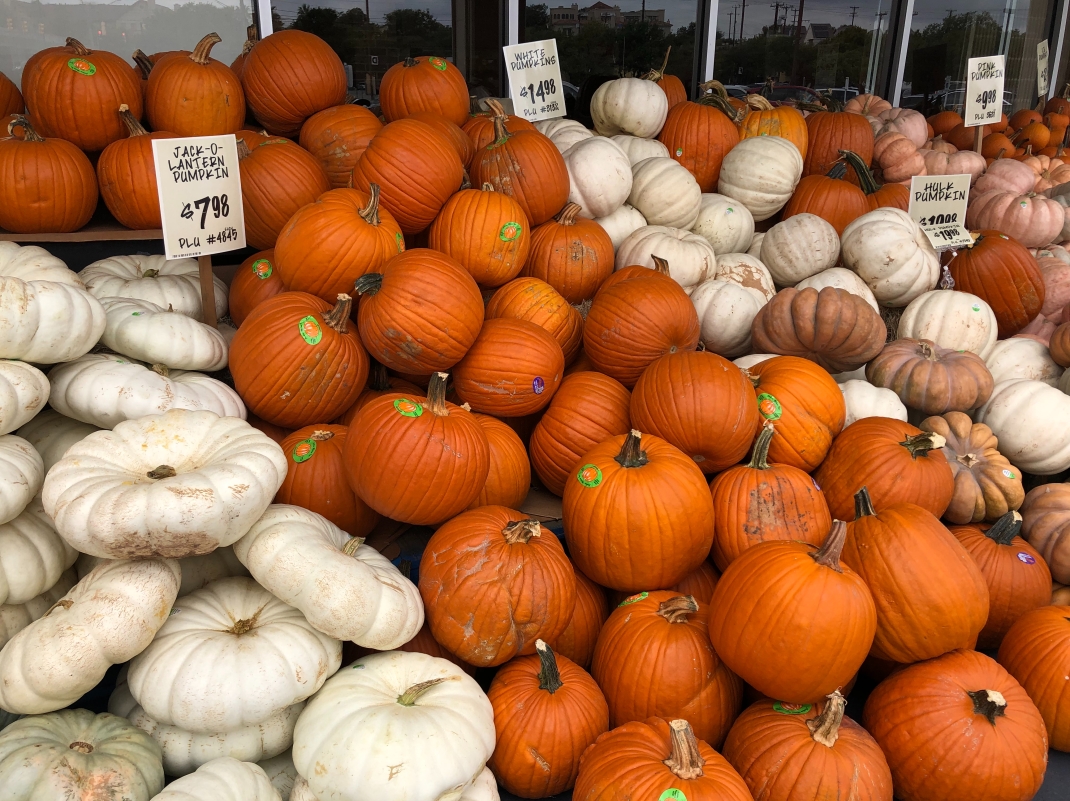Fall begins today and not a moment too soon. I am soooo ready for this long, hot, awful summer to be over, with all its natural disasters, pandemic plagues, and combustible rhetoric fanning the flames of fires everywhere, both real and imagined. If weather forecasters are correct, a “norther” should be blowing in to South Texas this week, always a sign of autumn’s imminent arrival, even if the short period of brisk breezes and fluttering leaves are yet bookended by 98º days. I’ll take what I can get.
Fall has always been my favorite season (probably because of back-to-school, football, and my birthday), even before I lived in Connecticut. But once I experienced the season in New England, where vistas of vivid foliage rekindle the spirit and sunlight filters strobe-like through the canopy of over-hanging trees on country backroads, I was really smitten for life. We always took a little family field trip upstate into the Housatonic River Valley around Columbus Day when the colors were usually at their peak. We pretty much always took the same route, stopping and shopping in quaint little early American towns along the way, then have lunch at our favorite Fife ’n Drum restaurant in Kent, and finally ending up at the covered bridge in West Cornwall, our traditional photo-op destination. These were only day trips, but they felt much longer, having taken us away from our present-day cares and transported us to an earlier, simpler time.
No matter where you are, seasons begin on the solstices and equinoxes of the year. The very word season, from the old French session, means sowing and planting; it entered widespread use in English during the 16th century. The word autumn also comes from the old French autompne, which in turn traces its derivativation to the Latin autumnus. From there, things are less certain, but the common assumption among etymologists is that the original meaning is probably related to the Latin word augere, to increase.
Calling the season “autumn” in English started around the 12the century. By the 16th century, the word autumn was in common use, but the word “fall” had also begun to appear, probably because of the routine sight of falling leaves at this time of year. “Fall” remains the preferred term here in the US, while “autumn” is still more common in the UK. Before all of this linguistic evolution, however, the season was most commonly called “harvest,” for obvious reasons related to farming and gathering of crops. To this day, it is harvest themes and images that define our seasonal decorations and celebrations, right through into Thanksgiving.
Changing seasons matter because they help us mark the passage of time and provide a reset button, so to speak, from the relative sameness of everyday routines (even when we aren’t living in the Groundhog days of a pandemic). Though we don’t all experience the seasons in the same way everywhere we live, we still greet them with our own particular memories mingled with some universal images: snowmen in winter, singing birds in spring, beaches in summer, pumpkins in the fall. Of course, those of us who don’t really have four distinct seasons have to make adaptations. I always wonder, for example, why people in South Texas send Christmas cards with snowmen and bobsleds on them. Is it a nod to nostalgia prompted by memories of growing up somewhere else, or is it just too many Normal Rockwell calendars hanging in Southern kitchens?
In any event, the changing seasons, even if they don’t visibly change all that much, give us something to look forward to or, if nothing else, to complain about. An old country saying comes to mind: “Everyone complains about the weather, but no one does anything about it.” That observation was never so true as it is right now when we all continue to argue about climate change while the world implodes.
Meanwhile, seasons change for better or worse and time moves on. To paraphrase an ancient philosopher, the only thing that doesn’t change is change itself. We may not be able to control the changes, but we can do our best to adapt in positive ways. For me, that means remembering those New England day trips fondly rather than sadly, decorating my house with fall leaves indoors rather than bemoaning the lack of color outdoors, and making my own squash soup and pumpkin bread rather than searching for a restaurant with a seasonal menu that offers my favorite fall fare.
And in the early twilight of the evening, I can settle down with a good Italian wine, listen to Vivaldi’s “Autumn,” and let the music paint the scene.


I love autumn and miss it in Ohio where we lived for many years. Nothing more spectacular. When I first moved there from Texas, I gathered beautiful gold, red, bronze colored leaves and pressed them in a book and sent them to my mother. She kept it all these years and I retrieved it after her passing in Oct 2005. Bittersweet memories. Autumn always makes me a little sad. But if you are in a part of the world to witness the splendor of leaf change, enjoy its beauty.
LikeLike
And if you’re not, there’s always a recipe for hot apple cider and a trip to Michael’s for faux leaves.
Thanks for your comments.
LikeLike